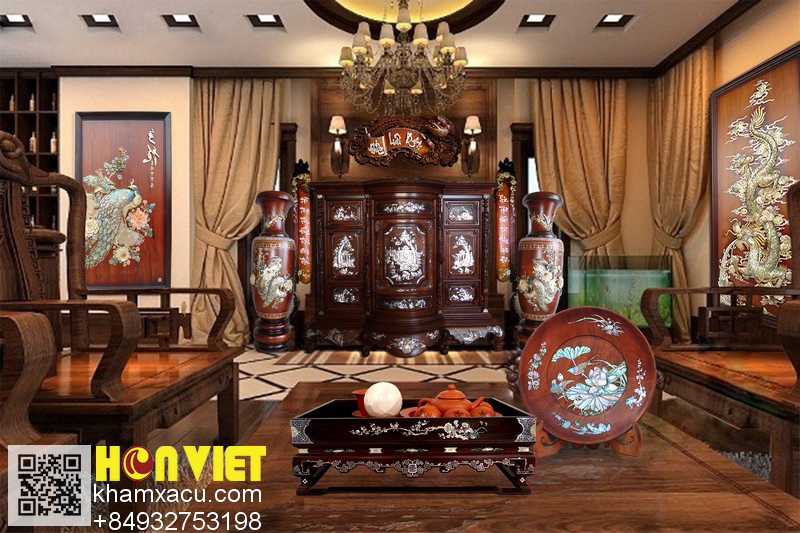Khảm xà cừ
Brilliant Hue : Mother-of-Pearl of the Joseon Dynasty
Brilliant Hue : Mother-of-Pearl of the Joseon Dynasty
Horim Museum

Horim Museum organized <brilliant hues: mother of pearl of the joseon dynasty> for 2015’s first special exhibition. This exhibition presents the highlights of Joseon Dynasty woodworking. It centres around lacquerware inlaid with mother of pearl, while also presenting other forms of woodcraft made using materials such as hawksbill shells, ox horn sheets and natural red paint.
The idiosyncratic aesthetics of Korea is well reflected in its crafts. Their beauty comes not onlyfrom from but also from pattern, color, ornament.Lacquerware inlaid with mother of pearl and ox horn sheets are fine examples of delicately rendered patterns and colors. Mother of pearl’s natural bril-liance and richness of color is pertinent after a thousand years. They have been made since the Goryeo Dynasty and is widely loved still to this day. Those inlaid with ox horn sheets were popular amongst women for their soft and graceful atmosphere. Due to the complex making process and natural limitation of material, there are not many surviving. Lacquerware inlaid with mother of pearl and ox horn sheets are materials different in texture but common in that they both decorate a wooden surface. They also bear witness to their times through various iterations of patterns. I hope this special exhibition serves as a meaningful opportunity where the beauty of mother of pearl and ox horn sheet lacquerware could be appreciated.
Finally, I would like to thank institutions as well as individuals for generously lending such precious pieces for this special exhibition.



